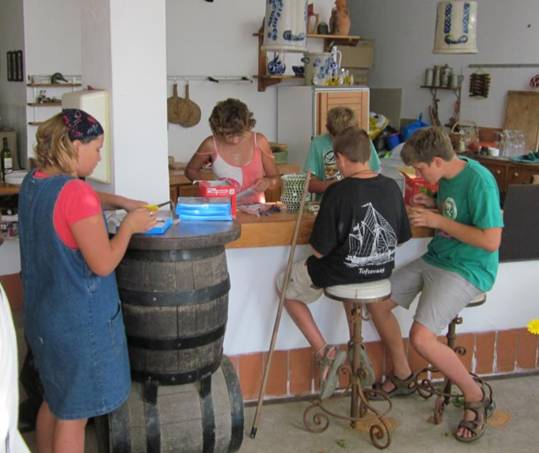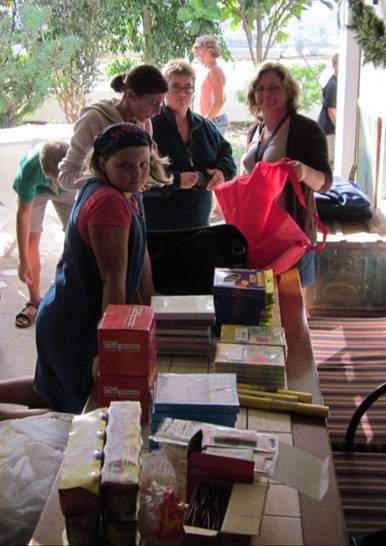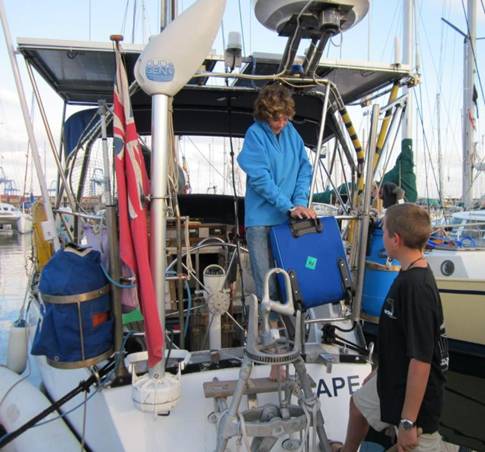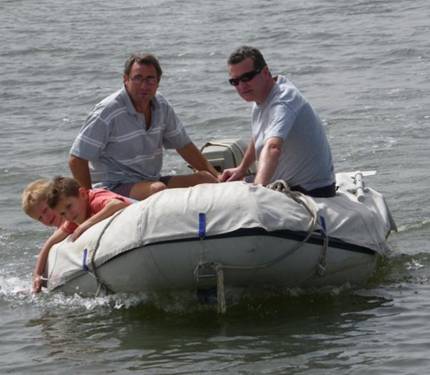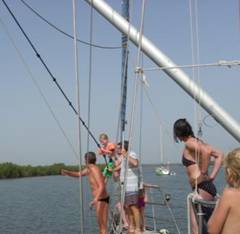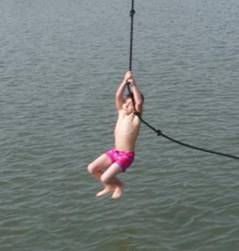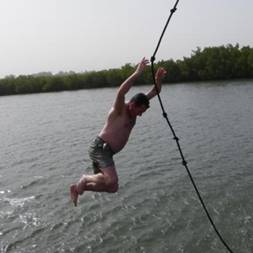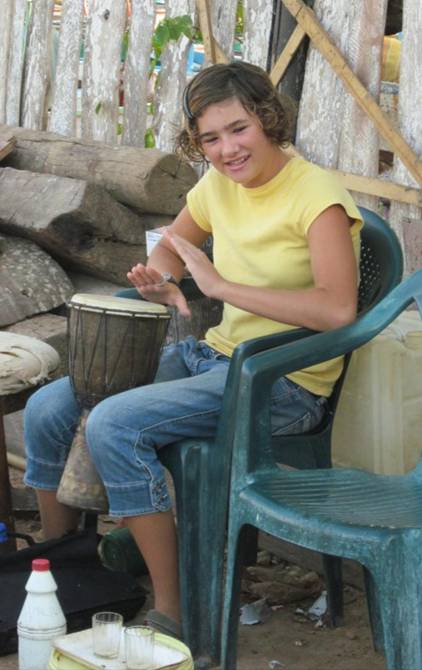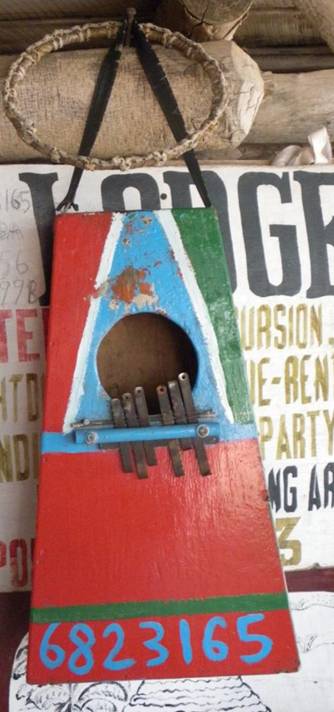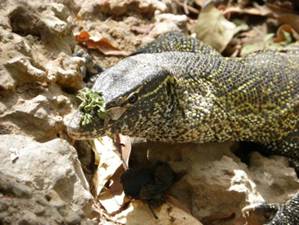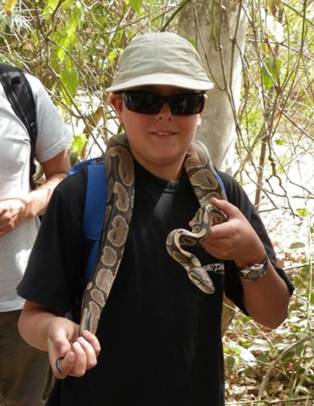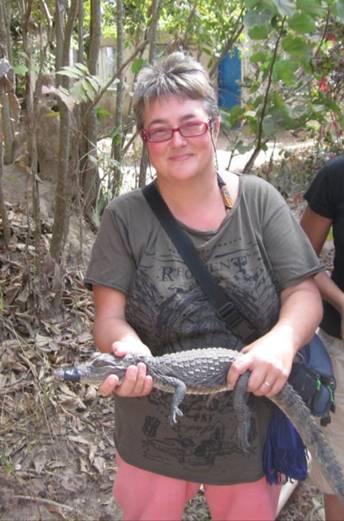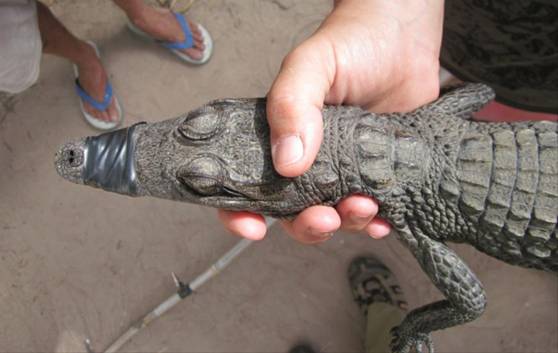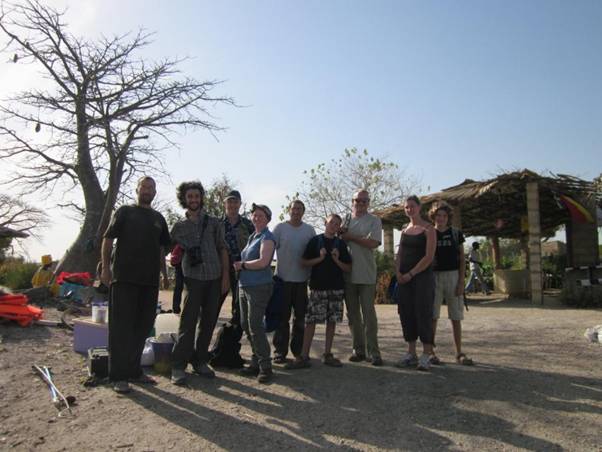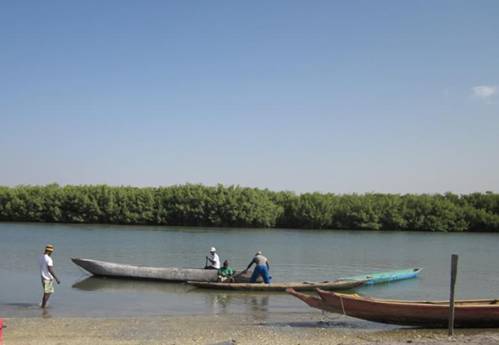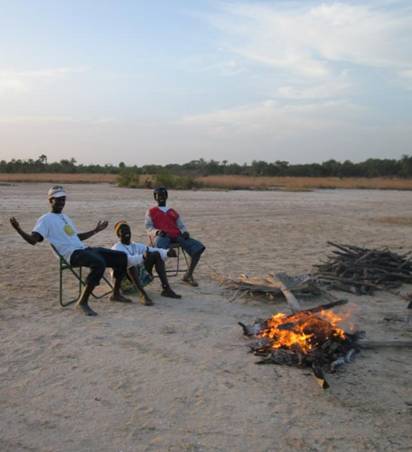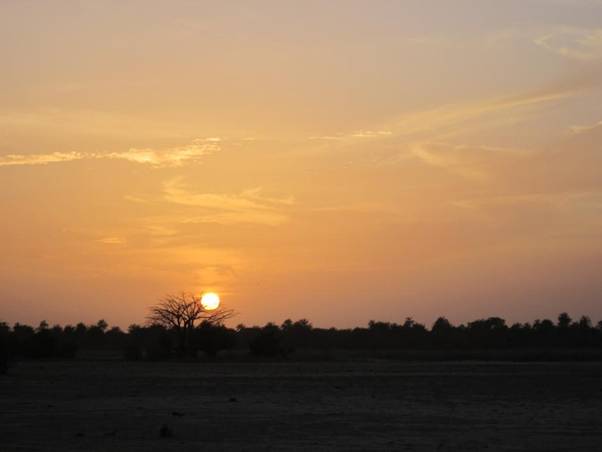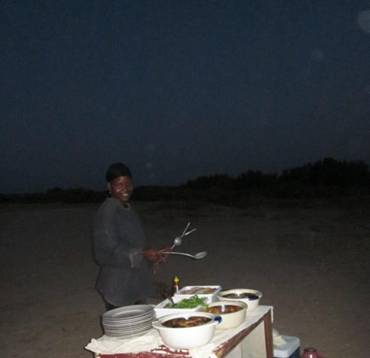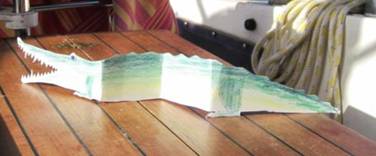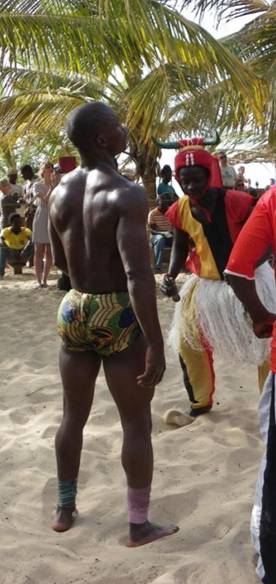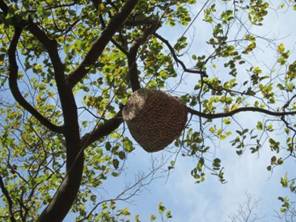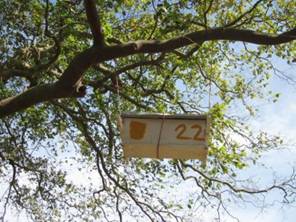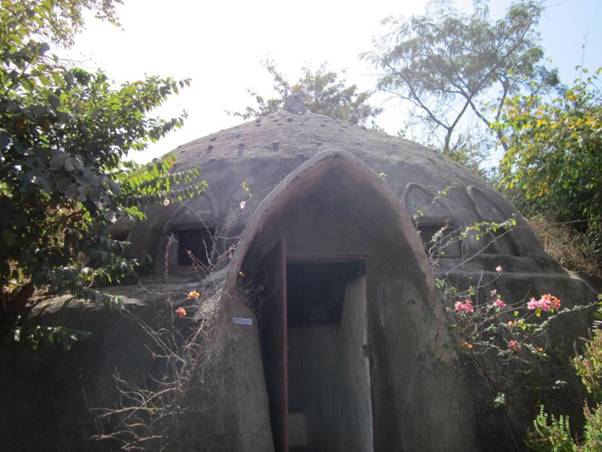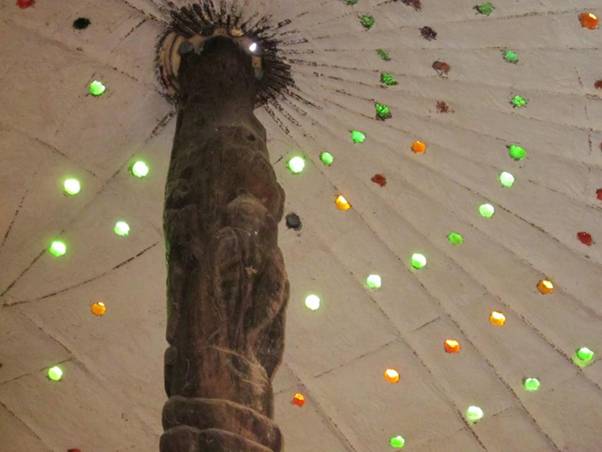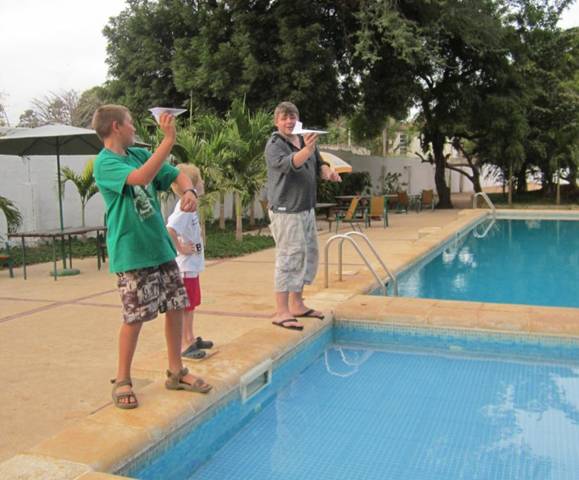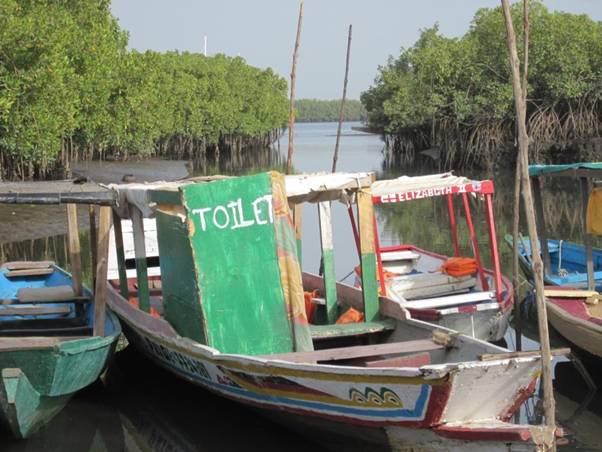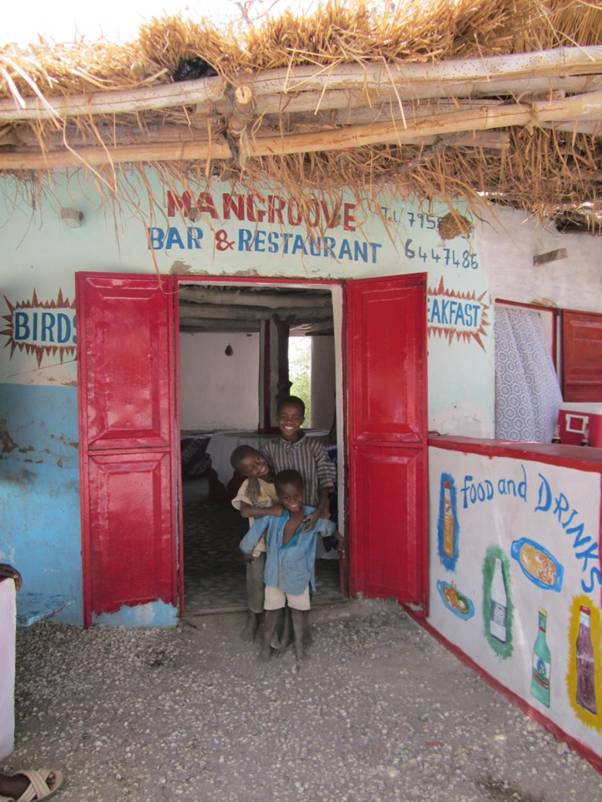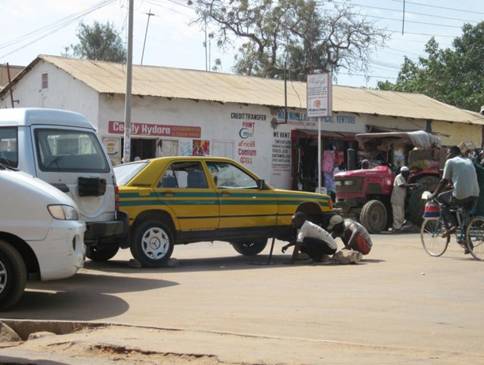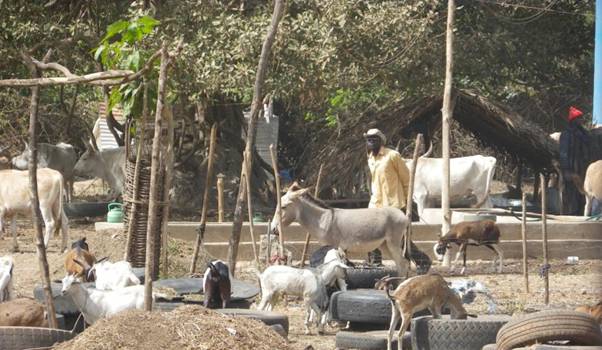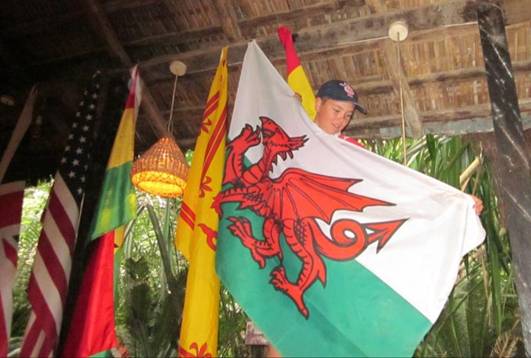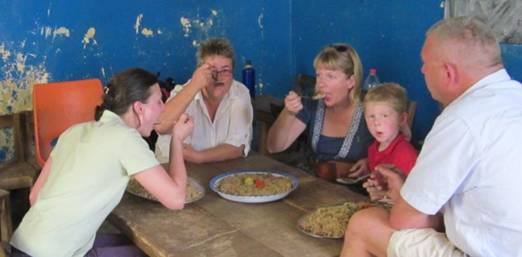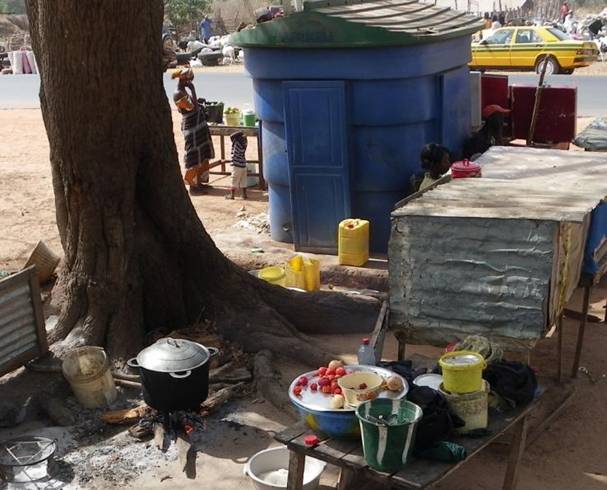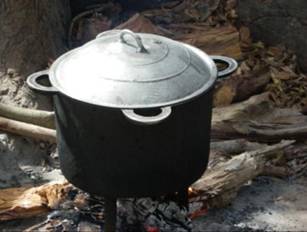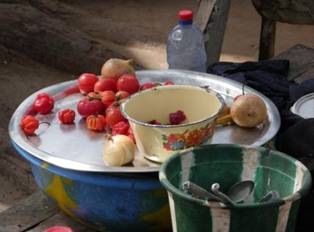Blog update: Mind-blowing Gambia

FirstAid4Gambia meets SeaCouriers One of the first things we did when we got to Gambia was get in touch with Fiona Nelson at FirstAid4Gambia [http://www.firstaid4gambia.org/]to organise to meet up and to deliver the school materials that we had carried from Las Palmas from Martha Hezemans of the SeaCouriers charity (Los Correos de la Mar) [http://www.corrieridelmare.it/pagine_html/pagine_inglese/index_eng.htm]. While in Las Palmas, we had helped Martha organize a boat jumble at the marina to raise funds, and then to sort and pack school materials for yotties to carry to far-flung places where the local children are devoid of pens, pencils, pencil sharpeners, erasures and notepads.
Boat kids sorting pencil sharpeners, erasers, pencils, pens and notepads.
Packing school materials with Martha; AQUAMARIJN took a pack for the Cape Verdes, and HEYMEDE carried a pack for Gambia.
Beth and Bryn loading CAPE’s quota of school materials (it’s hard to find room for much stuff alongside all the tins of baked beans...). Once we got to the Gambia, we helped distribute the materials that we had carried when we went out with Fiona on the first aid training days. Beth and Bryn also donated their LEGO collection to the children of Gambia. Making contact with FirstAid4Gambia made a huge difference to our visit to Gambia. Fiona and her crew were a source of invaluable information about how things worked, where to go, how much things should cost, what Gambian foods to try, where to buy food, organising transport, etc. If we hadn’t had CAPE with us, we could have used the FirstAid4Gambia compound in Serekunda as our base. Not only that, but they were a great bunch, and we spent many a happy hour around the BBQ, discussing the merits of Hellman’s mayonnaise and other important things in life... Spinnaker swing, pizza and red wine Fiona et al. and Dave and Taryna came across to CAPE to have lunch and spend an afternoon on the river.
Dave (HEYMEDE) ferrying Andy, Freddy and Fin. We had rigged up the spinnaker pole swing to keep the kids (big and small) occupied...
Members of the FirstAid4Gambia crew perfecting their spinnaker swing technique. Pizza and red wine went down well after all of the leaping into the river. Music and drums While we were at Lamin, Bethany had some drumming lessons from Mali, learning to play the African djembe drum given to us by Mark and Sheila (LITTLE JESSICA). Talking drums used to be used to send news from village to village, and are still a big part of Gambian life; we heard drums every evening while we were in Gambia.
Beth learning to play the djembe.
Musical instrument improvisation ? use your broken hacksaw blades to woo the toubab tourists into Lamin Lodge. Music is a huge part of Gambian life; links with the Caribbean music scene are strong, reggae is heard everywhere, many shacks are recording studios, and many cars are just vehicles for very large music speakers. Toubab tourists and crocodile hunters White tourists in the Gambia are referred to as ‘toubab’. Hoards of kids run along beside you yelling ‘toubab’, holding your hand and asking for sweets, school books, and plastic bottles (only once were we asked for money by a child). Sometimes we had as many as 3 or 4 kids hanging onto each hand. If you are out of reach or in a car, children (and some adults) just wave and yell ‘toubab’ as a friendly greeting. In the villages, almost everyone we passed made eye contact and said hello. We were sometimes hassled by young men wanting to sell us something, provide a service (obviously for a fee) or trying a gentle beg. Many wanted just to talk to us, ask us where we were from and whether we liked Gambia. We never felt threatened. We did the toubab tourist thing and had a day out visiting the craft market (wood carvings) at Brikama, and the beach near Kartong. The highlight of the day was visiting the Gambian Reptile Farm run by Luc (a Gambian-based, reptile-mad French scientist) and we liked it so much we went back to learn a bit more and to go out at night on the river to look for crocodiles ? the light of a torch or spotlight reflects off the retina as an orangey-yellow glow, making them easier to spot.
Nile monitor lizard with tastefully arranged greenery.
“Mummy can we have a pet snake? Mummy can we have a pet snake? Mummy can we have a pet snake? Mummy can we have a pet...” We learned how to hold a (baby) crocodile without hurting it and without getting hurt. We then had a go at picking a loose one up in a pen ? they move quickly and squeal like a baby. Apparently the squealing is designed to summon adult crocs to the rescue...
How to hold your crocodile without hurting it. We also learned how to tell the difference between Nile, dwarf and slender-snouted crocodiles (all found in the Gambia River); it is all in the number and size of the nuchal plates apparently (large scales at the back of the neck). Bigger crocs are lassoed around the snout using an adjustable wire loop on the end of a long stick, with lots of willing volunteers to jump on it once its jaws are lassoed shut. While crocodiles are happiest in fresh water, they can tolerate brackish water. They tend to eat fish rather than tourists in the Gambia. Luc also runs week-long expeditions to catch, tag and release crocs and is always looking for
Note the nuchal plates, and the Once we were trained up in how to catch, hold and identify baby crocs, we set off in a 20-foot dugout canoe, hot supper, cool drinks and powerful torches up the Allahein River on the border with the Casamance region of Senegal.
The intrepid crocodile hunters.
Our dugout canoe (sleek, one-piece model being paddled by the bloke in a white T-shirt) was made from a single tree trunk hollowed out. Most ‘modern’ pirogues are made in sections and leak like sieves (boat in the foreground). We went about 15 miles up river, spotting some amazing birds on the way (herons, egrets, ospreys, palm-nut eagles, Senegalese parakeets, sunbirds...). Another couple on the trip were avid bird watchers so were able to point out and identify the birds that we saw. When it started to get dark we stopped at a salt flat, went for a bit of a wander in the bush, poking likely-looking piles of leaves for snakes, and gathered firewood.
The dugout crew ‘chillin’ by the camp fire.
Sunset over the African bush.
Hot supper; spicy chicken, potato balls, salad, tapalapa (bread), beer, soft drinks, coffee... Nora came too ? it was her birthday, so we made here a croc card with googly eyes.
Happy Birthday Nora! Wrestling v. football Wrestling used to be the Gambian national sport, but has now been superseded by football. While there was no electric or water in many of the domestic compounds in Lamin Village, there were quite a few ‘sports bars’ showing all of the UK football fixtures on satellite TV!
Wrestling on the beach (for the tourists).
Impressive Gambian architecture. The Honey Farm We went along to the Honey Farm (Kumoo Kunda ? Home of the bees ? in Mandinka) to stock up on honey. Bee keeping in Africa involves enticing wild bees to colonise hives laced with beeswax. Mick and Jenny have been trialling different methods of bee keeping using basket hives or specially designed wooden hives that are often suspended in trees and mangroves to keep them safe from termites, snakes and ground squirrels. They run workshops for local beekeepers, showing them how to keep the bees, harvest the honey, and sell honey and wax products (e.g. lip balm, soap) to increase their income. They have also been trialling renewable energy sources and products and alternative crops -- a bit like the Centre for Alternative Technology in Machynlleth, but with better weather. They usually have a selection of American Peace Corps volunteers working alongside them at the farm, some of whom have lived with the locals in rural villages and have worked all over Africa over the course of a couple of years, so an evening around their dinner table makes for pretty interesting conversations. We spent quite a few evenings with them (and maybe one to two bottles of JulBrew and wine).
Mick and Jenny and their kids, Mair and Tao live in a mud-hut (the Hobbit House) that is built into the hill; it has a jewelled ceiling (glass bottles embedded in the mud), African jungle murals on the walls, and sleeping and living platforms on various levels. The ‘facilities’ and kitchen/dining room are separate areas outside.
The Hobbit House at the Honey Farm.
The jewelled ceiling and carved central pole of The Hobbit House.
The Hobbit House ‘facilities’. The Fajara Club We visited the Fajara Club a couple of times with Fiona’s crowd to chill, swim, watch Wales v. Scotland and test-fly paper aeroplanes.
Bryn, Ian and Fin at the Fajara Club Paper Airplane Testing Facility. Out and about in Banjul and beyond
You can go on bird watching tours from Lamin; the QE II is berthed alongside PRIDE (which boasts better on-board facilities).
‘D’ Mangrove Bar (Lamin).
We bought fruit and veg from Mama.
Sleeping like a baby. (Maybe I should send this photo to Nestlé!)
Changing a wheel in the middle of the road in central Banjul.
Typical roadside scene out of town. We found rugby (Wales v. England and Wales v. Ireland) served with steak and ale pie, chips and draught JulBrew at Francisco’s Bar.
Dr Evil and Mini-Me kitted out to watch Wales v. England in Francisco’s Bar.
“Dad, do you think they would notice if we pinched this one for the boat?” Food and drink On the subject of food and drink, we tried as much local food as we could ? from tourist restaurants to roadside stalls ? and were invited to share a meal with Alex at his family compound, where his Mum had cooked us traditional peanut stew with chicken and rice (domada ? a bit like a garlicky, peanut version of satay). Most dishes were a variation on fish, beans or chicken with rice; we tried captain fish (Nile perch), smoked fish, some mean curries, benachin (rice and fish), and chicken yassa. We had bitter tomatoes, xxxx-hot chillies, cassava, tiny sweet bananas, papaya, and avocados. Gambian bread is called tapalapa ? a bit like French bread only slightly softer, and it keeps. Traditionally, food is served on a single large plate and everyone helps themselves using their fingers; the Gambians have this down to a fine art, but we toubab were useless and they usually gave us a spoon each to save on the clearing up, showers and laundry afterwards.
School lunch at Bundung Borehole.
A road-side food stall; all cooking is done over open wood fires. Gambia has its own brewery and brews three strengths of JulBrew beer; we sampled two of them. We also sampled palm wine ? quite refreshing when fresh and chilled, but lethal when fermented. Soft drinks include the usual Coke and (dayglo) Fanta, as well as sachets of fruit ‘Trix’ that you mix up yourself. Ataya is a strong, sweet tea served in small glasses.
JulBrew’s 2012 marketing campaign... Very few compounds have a tap for drinking water. Water is carried in old 20-litre cooking oil containers (usually yellow ones) from a standpipe in the village. Our water was delivered to the boat via donkey cart then pirogue. The tap water in Gambia is safe to drink, apparently, although we did put Milton in our tanks when filling up. When out and about, the locals buy plastic bags of chilled water in the local shops (and then dump the plastic). Medical matters Before going to the Gambia, we had read and heard horror stories about malaria, tsetse fly (carrying sleeping sickness), and the tumbu fly that lays eggs in your drying laundry and then burrows into your skin to incubate before eating its way out. We had our yellow fever jabs in Las Palmas, and got advice about malaria prophylaxis. We even took an iron to iron our clothes to kill the tumbu fly larvae as it said to do in Steve Jones’ Cruising Guide to West Africa (I’m not sure that our inverter would run an iron ? I hadn’t really thought that one through...). We took Larium as directed before, during and after our trip (we didn’t suffer any side-effects). We festooned CAPE with mozzie nets and sprayed ourselves with DEET when we went ashore; we were bitten by mozzies once or twice, but there was always a breeze on the river and we really weren’t bothered by mozzies while on board. The locals (and long-term visitors) don’t take malaria prophylaxis, but they do seek advice and treatment immediately if they think they have malaria ?this is accessible through the local village clinics. We did dry our laundry outside and didn’t iron it afterwards, but we weren’t bothered by the tumbu fly; perhaps it was the wrong time of year. While we were there we were told that this fly is present all over sub-Saharan Africa but is just as likely to lay its eggs on your beach towel as your laundry, so it’s probably a matter of luck whether you get one. We weren’t bothered by tsetse fly either, although we did meet a Swiss couple on a catamaran who had gone up river to Basse. They had been attacked by tsetse flies on the way (40 bites or so, each), but when they sought advice about the bites at the local hospital they were told that sleeping sickness is no longer a problem in the Gambia. The main health ‘problems’ that we encountered were Banjula Belly when we first arrived (just due to the change in water, environment, etc.), and a couple of bouts of dehydration due to just not drinking enough (water). Just as you thought that it was safe to go back to sea Oh, no ? there’s more to come; we haven’t dragged you up river with us yet! Some useful info if you ever go to Gambia... ● Pilot book We used Steve Jones’ Cruising Guide to West Africa (RCC Pilotage Foundation, 2009, ISBN 978-0-9527771-2-0). It is a bit out of date, but still useful. ● Chart We bought the Admiralty chart number 609 (Albreda to Kuntaur) at the Port Office. Again, a bit out of date (1942 and not updated), but very useful; just don’t use it with a GPS ? back to olde worlde navigation (compass bearings and depth soundings) to make this chart work! ● Water and fuel Captain Edi can organize water and fuel at Lamin Lodge: 721 7121. ● Friendly face Alex (based at Lamin Lodge) will help you find your way around (and go with you into town for banks, local phone cards, internet dongle, fruit and veg market by bush taxi if you want) and is a great source of local information: 742 8780. ● Car and driver Solomon will drive you wherever you want to go and generally look after you: 704 1319. ● Background reading Roots by Alex Haley: while slated for being not quite true, it is a still an excellent read. We all enjoyed the TV series in the 1970s (remember Kunta Kinte, Kizzy and Chicken George?), but the book is even better and is actually a superb account of what it might have been like to grow up as a Muslim boy in the Gambia, and the harrowing account of being taken as a slave to America. ● FirstAid4Gambia http://www.firstaid4gambia.org/ You can get in touch with us via sarahsmith dot phd at gmail dot com. © 2012. All materials (text and photographs) in this blog (unless stated otherwise) are the property of Sarah and David Smith. Copyright and other intellectual property laws protect these materials. Reproduction or retransmission of the materials, in whole or in part, in any manner, without the prior written consent of the copyright holder, is a violation of copyright law. | ||||||||||||||||
